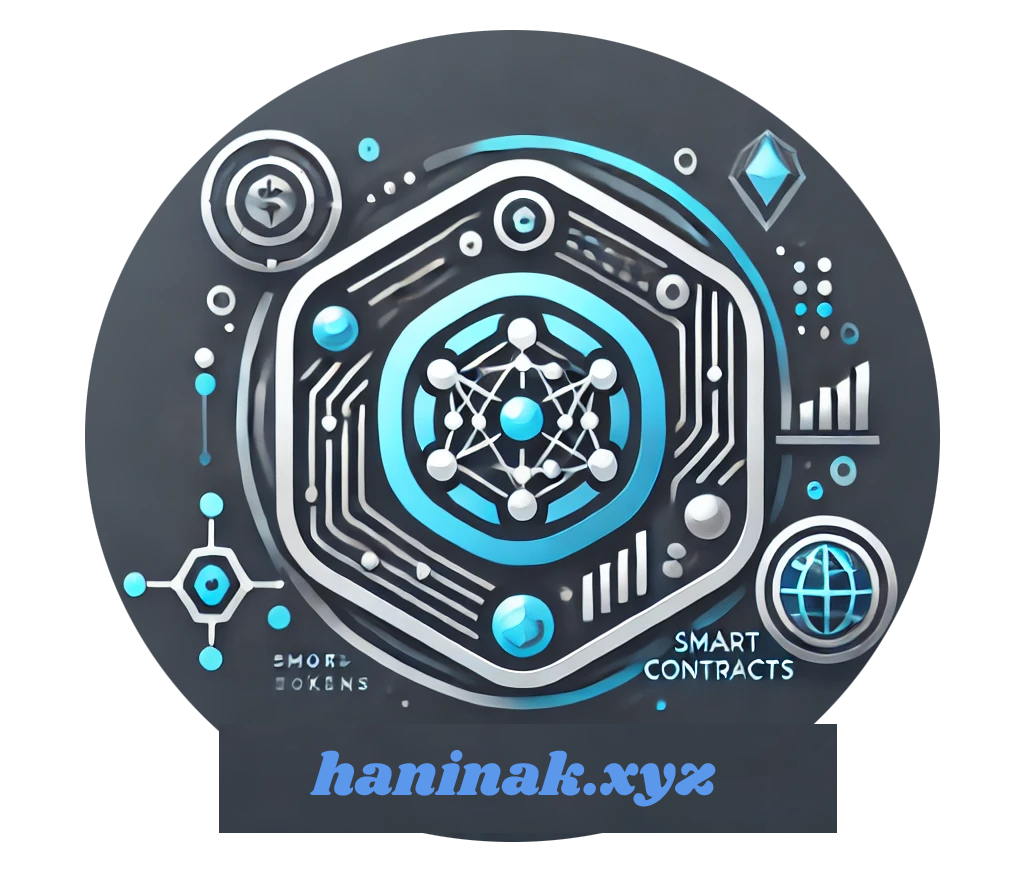How are smart contracts tested to ensure they are error-free?
Smart contracts are key in the Web3 world. They help make transactions safe, open, and reliable on blockchain networks. It’s vital to check these contracts carefully to avoid problems like money loss or legal issues.
Testing smart contracts is a detailed process. It includes using tools, manual checks, and other methods. Developers use tools like Truffle and Hardhat to make sure contracts work right and follow best practices.
Through strict testing, the blockchain community works to keep smart contracts safe. This effort helps build trust and encourages more use of Web3 technology.
Understanding Smart Contracts Technology and Testing Fundamentals
Smart contracts are digital agreements that run on blockchain networks like Ethereum, Binance Smart Chain, and Cardano. They automate complex tasks, enforce agreements, and manage digital assets. This is done in a way that is transparent and doesn’t require trust.
Core Components of Smart Contract Architecture
The main parts of a smart contract include:
- Functions: These are the code blocks that define how the contract works.
- State Variables: These store the contract’s current data.
- Events: These let others know what’s happening with the contract.
The Importance of Error-Free Smart Contracts
Because blockchain transactions are permanent and can’t be changed, it’s vital to test Ethereum Smart Contracts carefully. Mistakes in smart contracts can cause big problems. This includes losing money, unintended actions, and system crashes.
Testing Lifecycle in Smart Contract Development
The testing process for Solidity Programming and Distributed Ledgers has several stages:
- Unit Testing: Checks if each part of the contract works right.
- Integration Testing: Sees how different parts of the contract work together.
- Security Auditing: Finds and fixes any weak spots or bugs.
Developers use tools like the Solidity compiler (solc), Solhint linter, and Solc-js JavaScript library. These help make sure Ethereum Smart Contracts are reliable and of high quality.

| Blockchain Platform | Launch Year | Key Features |
|---|---|---|
| Ethereum | 2015 | Widely recognized blockchain for smart contracts |
| Binance Smart Chain | 2020 | EVM compatibility, lower fees, and faster transactions |
| Cardano | 2017 | Scalable and sustainable smart contract ecosystem |
| Polkadot | 2020 | Emphasizes interoperability and scalability for smart contracts |
| Solana | 2020 | High transaction speeds and cost-efficiency for smart contracts |
Essential Development Tools for Smart Contract Testing
In the fast-changing world of blockchain, making and testing Autonomous Code Execution and Trustless Transactions through smart contracts is key. Developers use powerful tools to make sure these digital agreements are reliable and secure. These tools help at every stage of smart contract development.
Truffle is a main framework for smart contract development. It helps write, compile, deploy, and test Ethereum-based smart contracts. Ganache is another tool that offers a personal blockchain for Ethereum development. It lets developers test their contracts in a local environment.
Remix is a web-based IDE that makes it easy to work with smart contracts in a controlled space. It helps developers quickly test, debug, and deploy their contracts.
Other tools like Hardhat have also come up in the smart contract world. It makes testing and deploying easier. ethers.js is a JavaScript library for working with the Ethereum Virtual Machine (EVM). OpenZeppelin provides secure smart contract libraries and templates.
These tools help developers deal with the challenges of smart contract development. They ensure the creation of strong, Autonomous Code Execution and Trustless Transactions for real-world use.
| Tool | Description |
|---|---|
| Truffle | A development framework for Ethereum-based smart contracts, providing a comprehensive suite of tools for writing, compiling, deploying, and testing contracts. |
| Ganache | A personal blockchain for Ethereum development, allowing developers to create a local test environment for their smart contracts. |
| Remix | A web-based IDE for interacting with smart contracts in a controlled sandbox, facilitating debugging, testing, and deployment. |
| Hardhat | A development environment that enhances the testing and deployment workflow for smart contracts. |
| ethers.js | A JavaScript library that provides a powerful interface for interacting with the Ethereum Virtual Machine (EVM). |
| OpenZeppelin | A platform that offers secure smart contract libraries and templates, promoting the development of reliable and secure Autonomous Code Execution and Trustless Transactions. |

Automated Testing Frameworks and Methods
Automated testing is key to making Immutable Records and Blockchain Applications reliable. Developers use tools like Foundry and Truffle to make unit testing easier.
Unit Testing with Foundry and Truffle
Foundry is a top choice for Ethereum development. It lets developers write tests in Solidity, avoiding language changes. This makes testing more efficient and accurate.
Truffle is another favorite for testing. It offers a wide range of tools for unit testing. This makes it a top pick for many blockchain developers.
Integration Testing Approaches
Unit tests check individual parts of a contract. But integration testing makes sure these parts work well together. It finds issues that might happen when different parts interact.
By doing thorough integration tests, developers can find and fix bugs early. This makes the development process smoother.
Performance and Stress Testing Techniques
Performance and stress tests check how well smart contracts handle different loads. They mimic real-world use to see how contracts behave. Fuzz testing, which uses random data, is great for finding hidden problems.
Using these automated testing tools, developers can make sure their projects are well-tested. This reduces the chance of mistakes and improves the quality of their work.
Security Auditing and Vulnerability Assessment
In the world of Decentralized Agreements and Smart Contracts Technology, security auditing is key. It helps find potential weaknesses. This process includes both manual and automated code reviews to spot hidden issues.
External security audits by specialized firms add an extra layer of protection. They use advanced tools and expertise to check smart contracts. These audits can cost between $5,000 to $15,000, depending on the complexity and support needed.
Vulnerability assessments are a big part of security auditing. They look for common problems like reentrancy attacks and overflow issues. Tools like MythX provide deep security insights through various analyses.
Securing smart contracts is vital. By February 2023, DeFi hacks had cost $5.13 billion. Weaknesses in smart contracts can erode trust, affecting user confidence in blockchain technology.
The blockchain industry has developed many security audit tools. Tools like Slither and Mythril are crucial for creating secure Decentralized Agreements and Smart Contracts Technology. This shows the growing focus on protecting these innovative solutions.
| Audit Service Provider | Average Annual Salary of Auditors |
|---|---|
| CertiK | $100,000 – $250,000 |
| ConsenSys | $100,000 – $250,000 |
| New Alchemy | $100,000 – $250,000 |
| Quantstamp | $100,000 – $250,000 |
| Solidified | $100,000 – $250,000 |
| Hosho | $100,000 – $250,000 |
| Chainsecurity | $100,000 – $250,000 |
By using these security auditing practices and tools, the blockchain industry can build a safer and more trustworthy environment for Decentralized Agreements and Smart Contracts Technology.
Static Analysis and Code Verification Tools
In the world of Ethereum smart contracts and Solidity programming, making sure your code is reliable and secure is key. Static analysis tools are a strong solution to find vulnerabilities and improve your Ethereum smart contracts without running the code. These tools look at the code without running it, showing potential issues and areas for betterment.
Using Slither for Code Analysis
Slither, made by Trail of Bits, is a static analysis tool that finds vulnerabilities and ways to improve Ethereum smart contracts. It can spot many issues, from common problems like reentrancy attacks to complex logic errors. Using Slither in your development process helps find and fix problems early, lowering the chance of expensive attacks.
MythX Security Scanning
MythX is a detailed security analysis service for Ethereum smart contracts. It has a simple API that works well with popular development tools. MythX uses different analysis methods to make sure your smart contracts are strong and safe.
Solhint Code Quality Checks
Solhint is a tool for Solidity code that checks style, syntax, and quality. It helps keep your Ethereum smart contracts clean and easy to understand. Using Solhint makes your code better, easier to work with, and more reliable.
These tools are crucial in the Ethereum world, where smart contract security is top priority. They help developers find and fix problems before they cause big issues. This keeps Ethereum applications safe and trustworthy.
| Tool | Purpose | Key Features |
|---|---|---|
| Slither | Static code analysis |
|
| MythX | Security scanning and analysis |
|
| Solhint | Linting and code quality checks |
|
By using these tools, Ethereum developers can make their smart contracts safer and more reliable. This reduces the risk of expensive problems and keeps their blockchain applications trustworthy.
Best Practices for Smart Contract Testing
Creating secure and flawless smart contracts is key in the world of Distributed Ledgers and Autonomous Code Execution. It’s vital to follow best practices in testing to ensure smart contracts are reliable and safe. Here are some important tips for testing smart contracts:
- Comprehensive Unit Testing: Write detailed unit tests to check how each function in the smart contract works. This helps find and fix problems early.
- Thorough Code Reviews: Regularly review the code to spot potential issues. Make sure it follows coding standards and best practices.
- Leveraging Events and Logging: Use strong event logging and monitoring. This gives clear insights into how the smart contract runs and helps with fixing problems.
- Inheritance and Interface Utilization: Use inheritance and interfaces to make the code more modular, testable, and easy to maintain.
- Compliance with ERC Standards: Stick to relevant Ethereum Request for Comments (ERC) standards. This ensures the smart contract works well with the wider blockchain world.
- Dependency Management: Keep dependencies up to date and know the latest security tips. This helps avoid potential security risks.
- Formal Verification: Look into formal verification to mathematically prove the smart contract’s correctness and security.
| Testing Technique | Description |
|---|---|
| Unit Testing | Verifies individual functions within the smart contract |
| Integration Testing | Checks interactions between different components of the smart contract |
| Fuzz Testing | Generates random inputs to identify unexpected behaviors and edge cases |
| Formal Verification | Mathematically proves the correctness and security properties of the smart contract |
By using these best practices in smart contract development, organizations can improve the reliability, security, and quality of their decentralized apps. These apps are built on Distributed Ledgers and Autonomous Code Execution technologies.
Conclusion
Creating error-free smart contracts needs a detailed approach. This includes using different testing methods, tools, and best practices. Each step helps make the contract reliable and secure. As Web3 grows, it’s key to keep up with new testing methods and tools.
Trustless Transactions and Immutable Records are central to smart contracts. They offer a safe and clear way for many uses. Smart contracts use blockchain to make sure transactions are secure and records can’t be changed, keeping digital deals safe.
The future of smart contract testing looks bright with AI-driven code review tools. These tools will help find and fix problems, making smart contracts even more reliable. This will open the door for smart contracts in many fields and uses.







